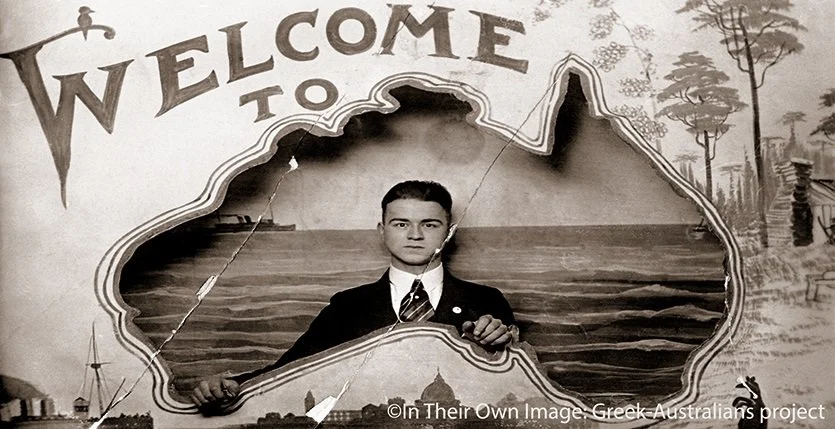Greek City Times is proud to present a weekly historical snapshot
from the archives of the ‘In Their Own Image: Greek Australians’ national project
by photographer Effy Alexakis and historian Leonard Janiszewski.
Greeks have been migrating to, and settling in Australia, since the very early 19th century. The descendants of these early settlers offer personal perspectives into generational notions of Australian identity, diasporic Hellenic identity, and cultural hybridity. Here we present Part 3, featuring descendants of 19th century Greek arrivals.
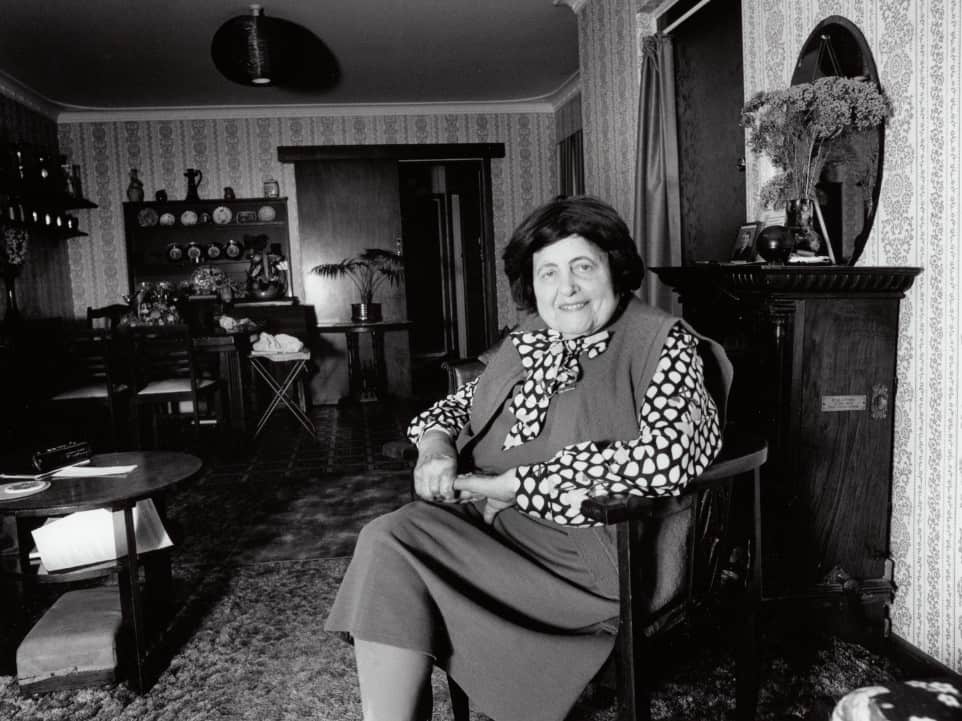
Clio Whittaker (née Doscas) Safety Bay, WA, 1987 (Photo by Effy Alexakis)
Clio’s father was John Doscas (Ioannis Paraskevas Doskas/Ntoscas), a Spartan who had arrived in Melbourne in 1889. In Melbourne he worked as an interpreter and tour conductor for Thomas Cook and Company. Moving to Perth in 1896, he established himself as an importer, general merchant, farm-produce agent and property investor. Doscas was also responsible for introducing the breeding of Saarnen goats (a German breed) to Western Australia. In 1907 he was elected to Cottesloe Council. Retaining the office for the next forty-two years, he served a term as Mayor – John Street in Cottesloe is named after him. In 1897, he married Clio’s mother, Mrs Margaret Coleman (née O’Sullivan), who had been widowed with one child. Margaret’s background was Irish. Clio was born at the turn of the century.
“My first name was Arethusa [Arethusa Clio]. Pa loved Greek mythology – I had to have a Greek name. ‘A child should be given a name to look up to’, said father. When they sent me to school people couldn’t remember it... My stepbrother [Apollo Ernest Doscas]... father had him christened in the Greek Orthodox Church... I married in 1949 in the Greek Orthodox Church. My husband was Stan Whittaker... [He] was in the British Army... I lived in an Australian community… [But] I love going to Greek festivities.”
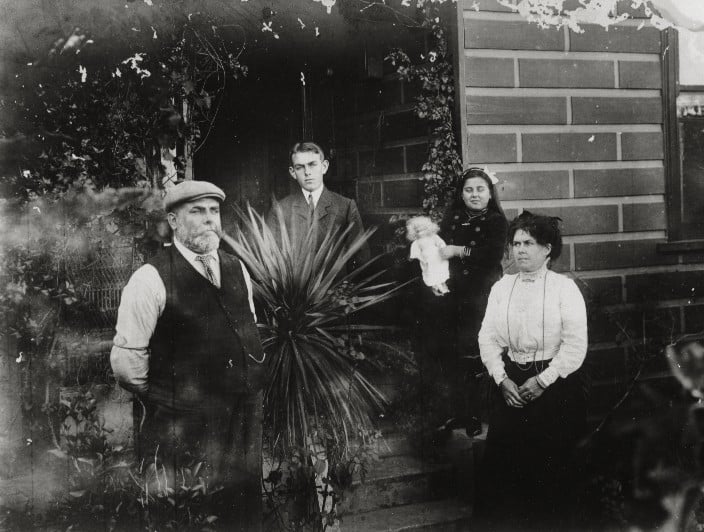
Doscas family Cottesloe, Perth, WA, c.1910 Left to right: John, Apollo Ernest, Clio and Margaret. Photo courtesy C. Whittaker, from the ‘In Their Own Image: Greek-Australians’ National Project Archives
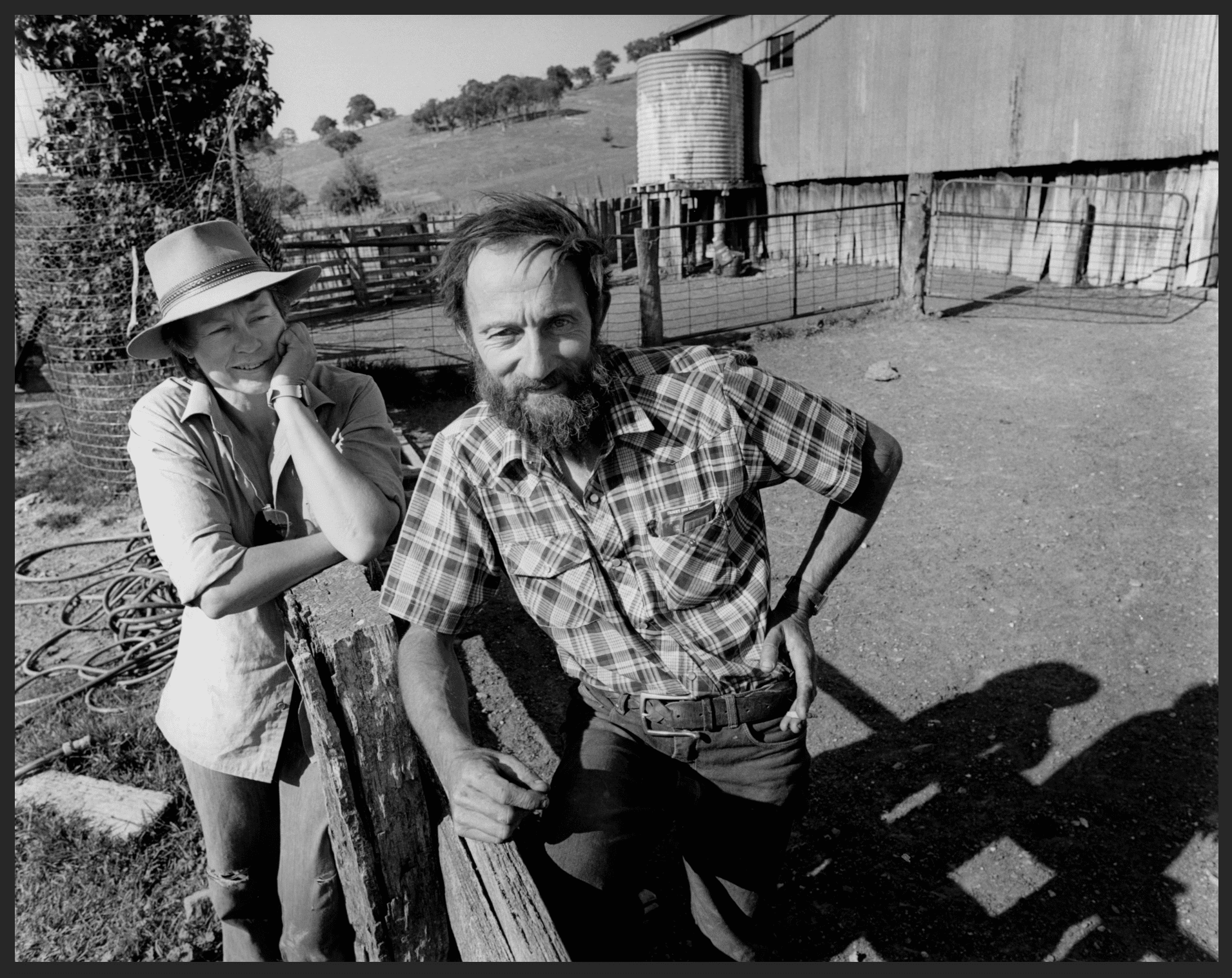
Betty and Mack’s maternal great-grandfather was Vacillius Macryannis who had arrived in New South wales around 1851, apparently ‘jumping ship’ in order to join the gold rush. It appears that he spent the rest of his life as a miner on the central-western goldfields of New South Wales – initially on the lower Turon River and later around the twin towns of Hill End and Tambaroora. He married Matilda Collins in Bathurst in 1858 (because very few Greek women migrated during the gold rushes, Greek men primarily married women of British background). The couple had nine children. A shop, which Vacillius acquired on Clarke Street in Hill End, is said to have remained in the family’s hands until the 1910s – it may have been a general store. Vacillius died in 1889, aged sixty-seven, and was buried in Hill End-Tambaroora’s Catholic Cemetery.
Betty: “Found out [about my Greek forebear] about five years ago… better than the Irish coming out of me.”
Mack: “I said I knew where the nose came from! I haven’t even thought about it [my Greek background]. It was something interesting I wanted to follow up… I don’t know what wiped out the Greek interest.”
Adele Ayres, who was born in the township of Tambaroora and attended school there during the very early part of the twentieth century, recalls the Macryannis family and another Greek family which they married into – Manolatos:
“I knew the [Greek] families who were still living in ‘Greek Town’ [located on the north-western outskirts of Tambaroora – near the Chinese camp – and recognised as the first collective settlement of Greeks in Australia; totaling approximately 100 individuals]. There was Mrs Manolatos (a widow), Jimmy, Ethel, Emma, Alice, Susan and Alec (her children). Mrs Manolatos’ sister Helen (or Ellen) Macryannis, lived with her brother Jack Macryannis in the house which was their parent’s home. In the next house was Peter Macryannis who was married and had several children who attended the same school. There was another sister, Mrs Ann Bluett who lived in the town, also there were three other brothers, one was Mick… The sad thing, these families were victims of ‘consumption’, known as TB [tuberculosis – an airborne infectious disease which particularly affected miners due to their working conditions]. At various stages in their lives TB set in, and nothing in those days could be done to save them. In the Catholic Cemetery in Tambaroora there were fourteen or fifteen graves of these families. ‘Greek Town’ and Tambarrora have now gone.”
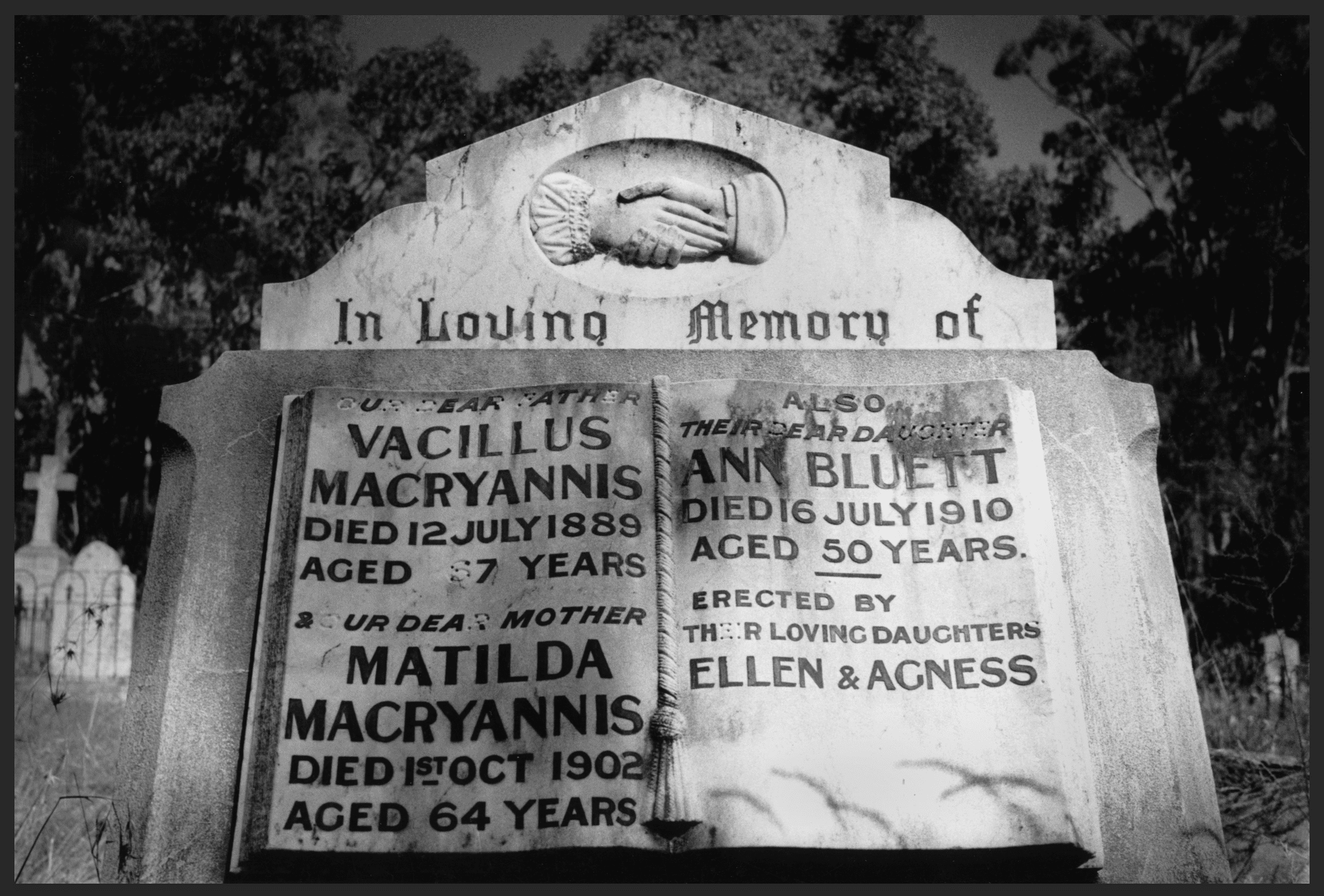
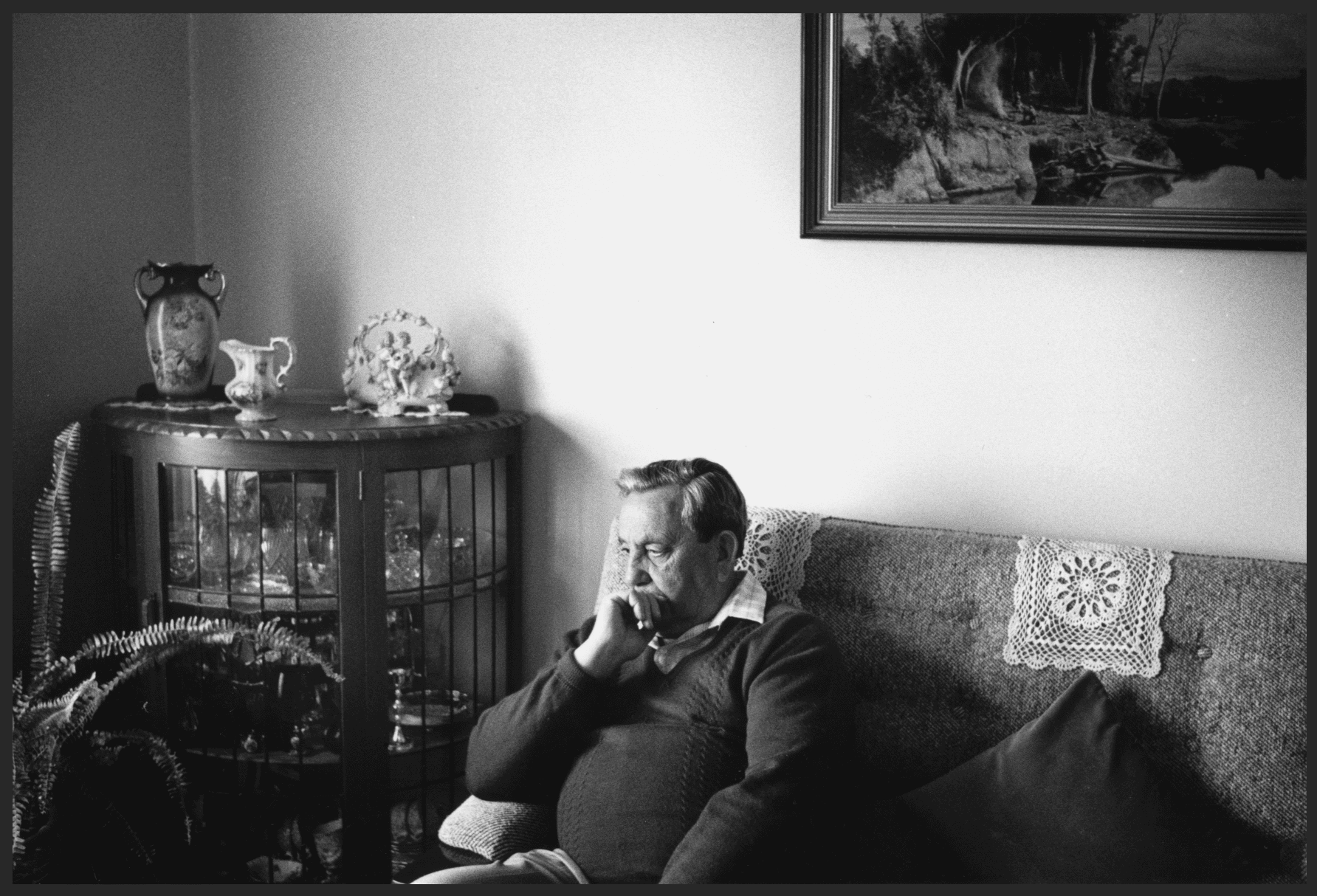
Bill D’Angri is the great-grandson of Natalie D’Angri who was born on Corfu in 1827. Bill has been enthusiastically research his family background for a number of years and was keen to uncover as much as he could in regard to his Greek forebear:
“I was the only one who knew that there was another branch of the family… I was able to make contact… and wonder of wonders, they had a lot of original documents belonging to Natale. They asked if I would be interested in them? It was like winning Tattslotto!... The D’Angry children were brought up in this house…”
Bill passed away in 2008, aged eighty-five.
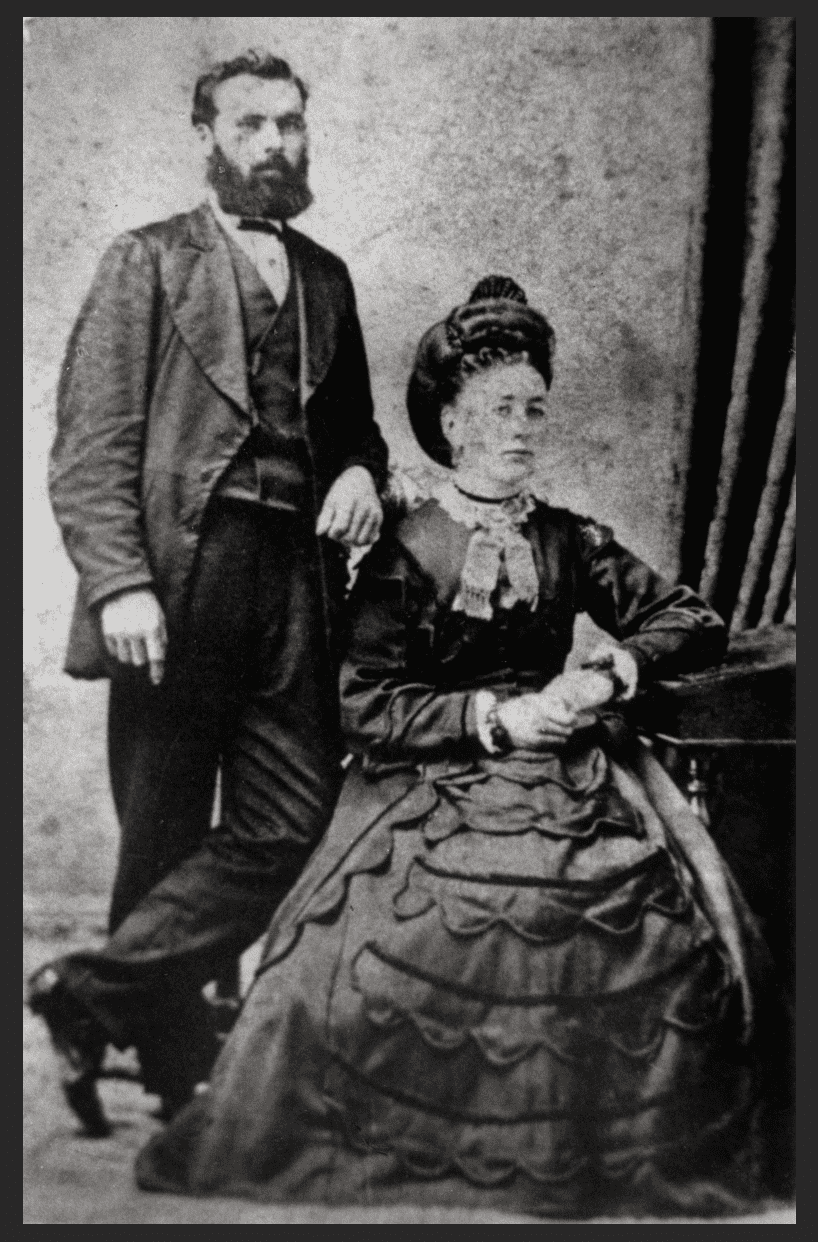
Arriving in Melbourne in 1852, Natale D’Angri (Natale Spiridion Giorgio Angri), headed for the Ballarat goldfields and soon struck it rich digging a claim with a group of Italians and Greeks called Italiana Hole. Although his father was from Naples, D’Angri had been born to a Greek mother on the Ionian island of Corfu and his obituary clearly states that he “was not an Italian, but a Greek”. With his small fortune, D’Angri returned to Corfu and toured Europe extensively before returning to Ballarat. In 1856, he married Eliza Watts in Melbourne. Naturalised in 1861, in 1869 he and Peter Lalor (of Eureka Stockade fame) became partners in two mines at Creswick, just north of Ballarat. During the same year, D’Angri formed (for the benefit of himself and Ballarat’s other Greeks — possibly 20 in total at the time) the Lebentia Rowing Club — the first Greek sporting club in Australia. Later in life, he became a nurseryman as well as a pioneer member of the Ballarat Horticultural Society, and even had a pumpkin weighing 136 lbs (pounds) selected for display at the 1886 Colonial and Indian Exhibition in London. D’Angri died at Ballarat in 1897, aged 70.
Photos: Effy Alexakis
Historical Research: Leonard Janiszewski
© In Their Own Image: Greek-Australians National Project Archives
ABOUT EFFY ALEXAKIS & LEONARD JANISZEWSKI

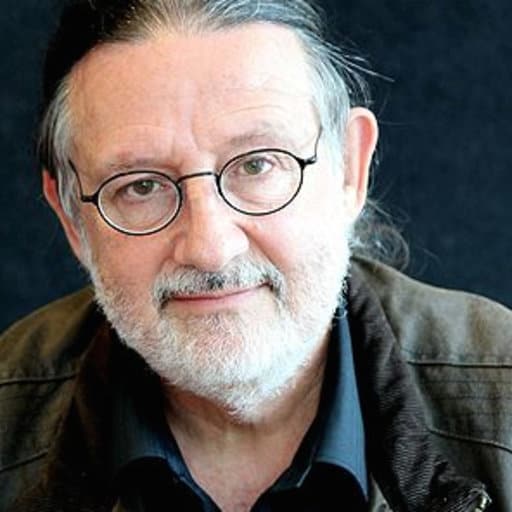
Since the early 1980s, Effy Alexakis, a photographer, along with historian researcher Leonard Janiszewski, have been travelling around Australia photographing and collecting stories. They have also photographed Greek-Australians in Greece and documented some amazing histories. The images and text provide personal, diverse and powerfully moving insights, about opportunities, hopes and challenges. Collectively, these stories provide personal perspectives of a diasporic Hellenic identity. Their archive encompasses photography, both historical and contemporary, taped interviews and literary materials.
They have published 3 books and numerous articles, and their projects are ongoing. The photographs have been widely exhibited throughout Australia and in Greece.
VISIT THEIR LATEST PROJECT: Greek Cafés & Milk Bars of Australia | Facebook

